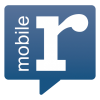By jason on 08/06/2013
Web design is a broad topic these days. There's so much to design for, aesthetics, usability, messaging, calling to action, and flexibility for ongoing site content updates.
It's not as simple as creating an image and slicing it into website code. The groundwork must be done to ensure that the design achieved meets the business objectives and user expectations.
The real issue, is conversion.
How can you design your site so that it converts more leads into customers?
While you can ask 5 web designers and receive 5 different answers, generally the principles are the same.
0 - Understand your audience
1 - Clear messaging of what you do, and why you help
2 - Aesthetically pleasing layout, colors, graphics, typography
3 - Clear calls to action, telling the users what to do
4 - Intuitive flow, directing users eyes through the important elements on the page
5 - Flexible layout, so adding new content to the site doesn't require much/any design work
When you're following these principles, also consider the SEO strategic approach you're taking. Use your keywords, as much as possible in the navigation, headings, and primary content. Be sure that you're messaging is both clear to users, and to search engines.
Most web design projects begin with a wireframe. From there, refinements are made on the graphics, typography, and messaging that is done.
When the wireframe is constructed, we identify the main navigation, heading on the page, blocks/sections of content that will appear, and the colors we'd like to use.
Often we receive inspiration from the sites the client likes best, or from the competitions websites. The goal is to showcase the brand, and to convert customers.
Simplicity is a key element. Make it easy on the user. Often times, websites are designed using the language the company uses to describe itself, rather than the language the customers use to describe the business. While it's ideal that these are the same, it's not always the case.
To fully leverage the value of your website, it should be regularly attended to, thought of as part of the business, and not a sign or trade-show booth. Rather, it's the person waving the sign, the staff at the trade show booth.
Your website will do whatever you want it to, almost. It requires effort, evaluation, and sustained commitment, just as employees do. Because of this, it's hugely beneficial to have trustworthy, innovative resources at your disposal that help you understand how to better take advantage of the web. This is what we do, at Nerdy Dragon.
Contact us to discuss conversion oriented web design.










